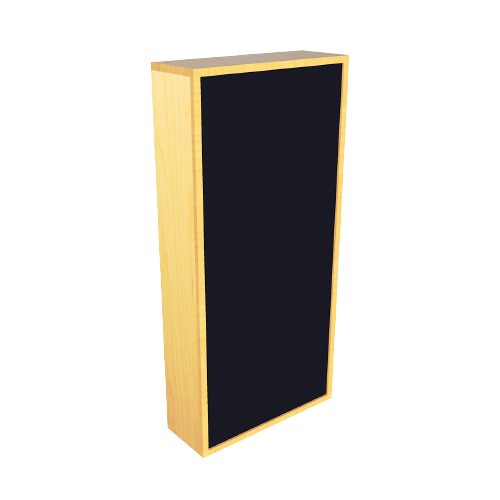
Optimizing Acoustics for Home Recording Studios
Home recording acoustic treatment must deal with the same acoustical issues as larger production studios. When we are considering the acoustics of any small room, we must divide the issues inside the room into two main parts. We have lower frequency pressure issues along with middle and high frequency reflections.
Home recording acoustic treatment must be able to address both pressure and reflection issues. Home recording acoustic treatment must be able to deal with the excess pressure issues of both low frequency room modal pressures along with reflections that produce higher reverb times. Let’s examine lower frequency pressure issues called modes.

Addressing Low Frequency Pressure Issues
Room modes are the result of wavelengths of lower frequency energy that do not fit inside your room dimensions. When a room mode occurs it causes the air between the walls to vibrate. This air vibration produces an audible distortion that is called a room mode. Room modes do two things. They can give you too much of an octave band or they can eliminate that frequency of energy completely. They are the most powerful of room distortions for lower frequency pressure issues.
They can occur between two parallel walls, four walls and six surface areas. They must be identified as to frequency, amplitude, and room location. Any form of home recording acoustic treatment must be able to manage unwanted room modal pressures. The second issue we face is reflections from the four walls, floor, and ceiling. These reflections all add together to produce reverberation.

Tackling Reflections and Reverberation
Reverberation is defined as to how long a sound stays around within the room after it has been sung, spoken, or played. Reverberation has a negative impact on speech intelligibility. SI is defined as to how many words one can hear in a ten word sentence. We design for a 80 SI which means that 8 out of 10 words can be clearly heard.
Every surface area within your room contributes to approximately 17 % to the overall reverberation time. Reverberation is a measure of decay or how long the sound energy stays within the room. At Acoustic Fields, we have design services that can assist you with reverberation management. Reverberation also has a negative impact on music.

Cutting-edge Solutions for Low Frequency Absorption
To manage lower frequency unwanted pressure issues, we turn to the most powerful low frequency absorption technology callede diaphragmatic absorption. Low frequency room modes exhibit a lot of excessive pressure. To absorb these pressure waves, we need a technology that can deal with the pressure wave. Our ACDA and Carbon Panels are the most powerful diaphragmatic absorbers ever created.
Inside our diaphragmatic design is our proprietary active carbon technology. Our ACDA series begins at 30 hz. and goes through 6,300 hz. Our Carbon Panel starts at 40 Hz. and goes through 6,300 hz. These carbon units have the required rates and levels of absorption to absorb excess lower frequency pressures.

Proprietary Foam Technology for Mid to High Frequencies
Our proprietary foam technology took 8 years and 2 million dollars to recreate. It has the smoothest absorption curve ever created. It has a linearity that is smooth and even from
125 hz. – 500 hz. You can see in the graph above the performance of our foam technology. When you are managing the sound energy that is in the middle and high frequency areas, you must have a linear absorption curve for music and voice.
Voice and music are special and require a linear rate and level of absorption to manage the time signature of middle and high frequency absorption. If you focus on both low frequency pressure issues along with the time signature management of all reflections in your home recording acoustic treatment.







